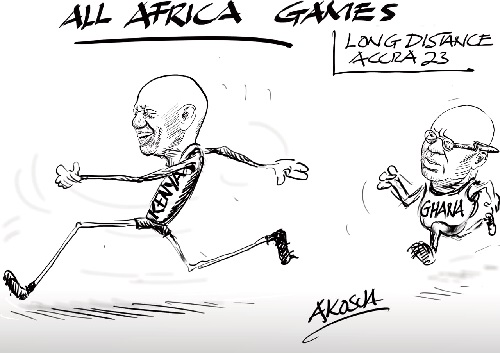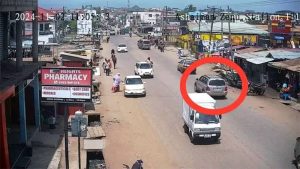
By Elliot WILLIAMS & Toma IMIRHE
Last week African Reinsurance Corporation, more commonly known simply as African Re, organized a three day workshop on Agriculture and Climate Insurance at the plush Labadi Beach Hotel in Accra, which hosted insurance professionals from 14 different countries on the continent.
Apart from participants from Ghana, the host country itself, insurance professionals attending the workshop were drawn from Cote d’Ivoire, Ethiopia, Kenya, Nigeria, Rwanda, South Africa, Tanzania, Uganda, Zambia, Zimbabwe, Liberia, Egypt and Sudan.
Africa Re organized the workshop with a view to engage insurers from around the continent on the design and deployment of agricultural insurance products and services. This is part of the biggest pan African reinsurer’s holistic effort to engage wider partners and stakeholders from both the public and private sectors with regards to agricultural insurance in Africa in order to develop a profitable and therefore sustainable agriculture insurance market across the continent; which is line with its overall objective of fostering the development of the insurance industry in Africa and through it, supporting the continent’s economic development.
To be sure, agricultural insurance is a key component towards fulfilling this objective, but one which is largely missing across much of Africa. Reducing the huge risks involved in agriculture, which is essential to the continent’s well- being, is crucial if the sector is to receive the investment and credit financing requisite for it to meet its productive potential and fulfill its role as a pillar of its economic growth and development.
“Agriculture remains a pillar of Africa’s economy and is critical to the continent’s quest for economic prosperity” noted Ken Aghoghovbia, Africa Re’s Deputy Managing Director and Chief Operating Officer in his opening remarks to commence the workshop last Wednesday. “Statistica.com reports that in 2022 agriculture accounted for around 17% of the Gross Domestic Product of sub-Saharan Africa with per-country agriculture-related GDP figures ranging from 1.6% in Libya to 60.45% in Sierra Leone. This in addition to employing approximately 43% of the continent’s working population in 2021.
He further asserted that the level of contribution to GDP could have been much higher but for the untoward circumstances facing the sector such as flooding, desertification, of crops and grazing lands, conflicts between herdsmen and local farmers, low use of modern technology, inadequate financing other among factors that have stifled the sector’s productivity, threatened food security and reduced the pace of the continent’s economic development.
Indeed, with regards to Ghana, the acting Commissioner of Insurance, Kofi Andoh, while welcoming participants to the workshop explained that: “The traditional challenges of the agricultural sector such as pests and diseases, high mortality of livestock, post harvest losses and very low productivity due to low quality of inputs and inefficient methods of production, have been compounded by climate change and loss of biodiversity.”
This, he noted has made the agricultural sector very risky and therefore it is very difficult for the sector to attract credit from banks and other financial institutions. He revealed that according to Bank of Ghana reports, even though agriculture accounts for about 24% of the country’s GDP, it receives an average of only 4% of bank lending every year. His recommendation: “Though it is not the only panacea, agricultural insurance is a major tool that could be used to help mitigate the risks that plague agricultural productivity.”
However, across most of Africa, despite the demonstrated contribution of agricultural insurance to the development of the agriculture sector, adoption of agricultural insurance programmes is still very low.

Revealed Aghoghovbia: “Out of the US$46 billion global agriculture insurance market, agricultural insurance premiums originating from Africa account for only US$400 million.” He went on to explain why. “This dismal performance is attributed to several factors including the limited pool of agriculture underwriting expertise and low adoption o of digital solutions that could improve the uptake of agriculture insurance.
Furthermore, insurance partners who have attempted to underwrite agriculture insurance business have often posted poor results. Investment in agriculture insurance product development is low and many stakeholders are still struggling to understand the concepts.”
Indeed, the high risks involved in providing insurance cover for the agricultural sector requires inordinately high premium rates if they are to be viable for insurance policy underwriters but this scares of farmers, many of whom simply cannot afford them.
Ghana is an example of this conundrum. Explained Andoh to participants at the workshop: “In Ghana we embarked on a journey to implement agricultural insurance in 2010. After the feasibility studies and stakeholder consultations the Ghana Agricultural Insurance Pool was set up. The pool started well but we could not upscale due to lack of capital, the unaffordable premiums and poor institutional collaborations.”
He also gave an insight into Ghana’s efforts towards overcoming the situation and ensure adequate supply of affordable insurance products to farmers. ‘A new insurance Act has been passed which makes room for a legal definition of indexed insurance. This resolves the legal uncertainties surrounding indexed insurance as an acceptable insurance mechanism. Subsequently the National Insurance Commission is working on a directive on indexed insurance to help ease the development and delivery of affordable agricultural insurance to small scale farmers who happen to be in the majority.”
Ghana’s new Insurance Act has also created an Agricultural Insurance Fund to subsidize premiums, build the capacity of service providers and boost the deployment of technology in the delivery of agricultural insurance. Reveals Andoh: “We are working with some development partners to develop the governance and operational framework for the Fund to facilitate its effective implementation.”
The Ghana Agricultural Insurance Pool is also being restructured into a Technical Service Provider. “This will enable insurance companies which are willing to develop and distribute agricultural insurance to do this” explained Andoh.
The workshop itself aimed to among other things, equip participants with the technical capacity to roll out robust agricultural insurance product development, underwriting and claims handling in their various companies.
To do this the workshop had a comprehensive, busy agenda over all three days.
On the first day presentations were delivered on opportunities for growth in agriculture and climate insurance; developing agriculture and climate insurance programmes through partnerships; the role of insurance industry players in promoting agricultural insurance in Ghana; global evolution of agriculture insurance business – a case study of India and China; digital inclusion in agriculture insurance; integrated agriculture risk sharing and financing facility – the story of Rwanda; From innovation to production in climate insurance; and addressing farmer-herder conflicts through insurance.
On the second day presentations were delivered on: integrating agro-ecology and crop physiology in crop insurance practice; finding home grown solutions in agric risk monitoring; agricultural insurance products and innovations – a general overview; agricultural insurance best practices (underwriting and claims management considerations). There were also a panel discussion on agricultural insurance and four break out sessions on agricultural insurance opportunities, challenges and solutions.
On the third and final day, participants embarked on a field trip to the Kpong Irrigation Scheme at Asutsuare in the Shai – Osudoku District of the Greater Accra Region, which is the largest irrigation scheme in Ghana.
The post Africa Re convenes agricultural insurers from all around Africa to build capacity appeared first on The Business & Financial Times.
Read Full Story














Facebook
Twitter
Pinterest
Instagram
Google+
YouTube
LinkedIn
RSS